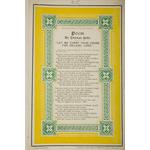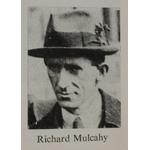Main Sites of Activity
Ashbourne, County Meath
Commandant Thomas Ashe and Volunteers of the small 5th Battalion of the Dublin Brigade were active in north county Dublin throughout the Easter Rising. Partly on the advice of his second in command Richard Mulcahy, a member of a Dublin city battalion who had only just transferred to Ashe’s battalion, Ashe adopted guerilla tactics, damaging railway lines and capturing some small Royal Irish Constabulary barracks, the aim being to hamper enemy movements, take pressure off their comrades in Dublin city, and procure arms. On Tuesday of Easter Week, Ashe dispatched twenty men to the GPO, some of whom were sent on to the Mendicity Institution.
On the Friday morning, Ashe’s force of fifty Volunteers surrounded the RIC barracks at Ashbourne across the border in Co. Meath. The garrison of sixteen men and a district inspector was about to surrender when a force of approximately sixty RIC men and two senior officers arrived on the scene in motor cars. Following a lengthy engagement along the dykes, drains and ditches, the Volunteers forced the RIC, both those in the open and those in the barracks, to surrender. Joseph Lawless, a Volunteer who participated in the action, has given the casualties as two Volunteers killed and five wounded and eight RIC men killed and fifteen wounded. From the Volunteers point of view this was by far the most successful action of the Rising, the element of surprise probably being a major factor. Ashbourne and the guerilla warfare tactics adopted by Ashe and Mulcahy provided a role model for those involved in the War of Independence in the following years.
Following the general surrender Ashe was tried by court-martial and sentenced to death, but the sentence was commuted to penal servitude for life.











